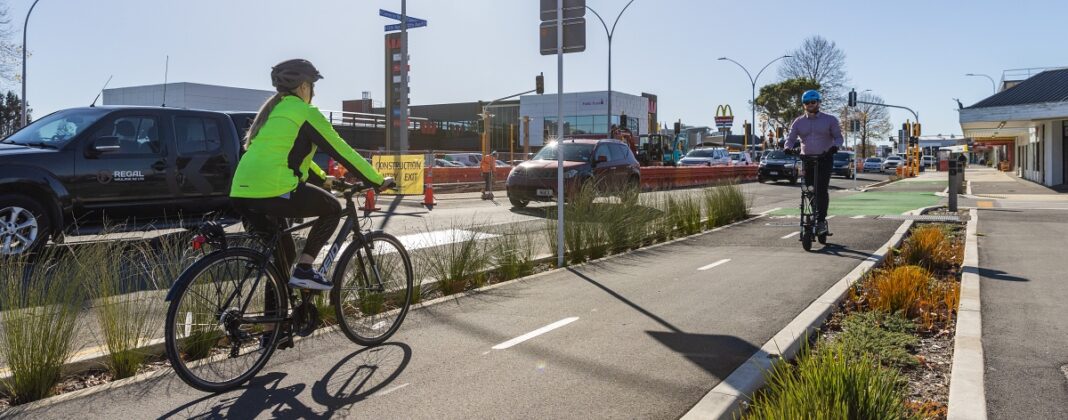A review of traffic management processes is expected to reduce the impacts of the ongoing Cameron Road upgrade on businesses along this key arterial route.
This hugely significant project is the first stage of a work programme designed to futureproof the Cameron Road corridor to ensure that it can cater for housing intensification along the Te Papa peninsula, where the population is expected to grow by around 15,000 people over the next 30 years.
Stage One of the ‘Building our future’ Cameron Road project, between Harington Street and 17th Avenue, is part-funded by a $48 million Government grant and involves intersection safety improvements; safe crossing points for pedestrians; the creation of bus clearway lanes in both directions (with the lanes available for parking outside of the morning and afternoon traffic peak periods); construction of grade-separated cycleways and footpaths;
placemaking upgrades to gardens and greenspaces; and the renewal and upsizing of ageing underground services (water, wastewater and stormwater assets).
The project has been underway for some 18 months now and is expected to be completed by the end of 2023.
Apart from intersection safety, improved pedestrian crossing points, peak travel time bus clearways and renewed underground services, the Building our Future Cameron Road project also provides grade-separated cycleways and walkways and significant garden areas.
Major roadworks like this are inevitably disruptive, but a number of factors have resulted in impacts on the businesses that rely on access to and from Cameron Road for their customers and staff.
We asked the joint venture contractor to conduct a thorough review of the construction elements of the project, particularly focusing on the use of traffic management infrastructure (mainly the large, orange water-filled barriers that channel traffic and pedestrians away from worksites), with a view to identifying solutions that will help to ease the problems businesses along the work zones have been experiencing.
As a result, rather than leaving traffic management equipment in place when work is delayed for some reason, this is being removed and a temporary surface provided if the delay is expected to extend for a week or longer. And rather than use the barriers all of the time, the JV is using other, less-disruptive equipment when it can safely do so.
A procedure has also been put in place to assess the likelihood of delays before worksite establishment begins in new areas, to ensure that there is no equipment-related disruption until it is absolutely necessary.
Council’s project managers are meeting with the JV on a regular basis to monitor progress and any issues that are arising and there is a joint commitment to being more agile in addressing stakeholder impacts through to the project’s completion.
In addition to the above steps, Council has initiated an external review of the entire project, so that we can use the learnings provided to avoid unnecessary issues with future major infrastructure projects, such as Cameron Road Stage 2 and the planned 15th Ave/
Turret Road upgrade.
In the meantime, the Council and the Commission want to thank Cameron Road businesses and road users for their patience while this transformational project is completed.












